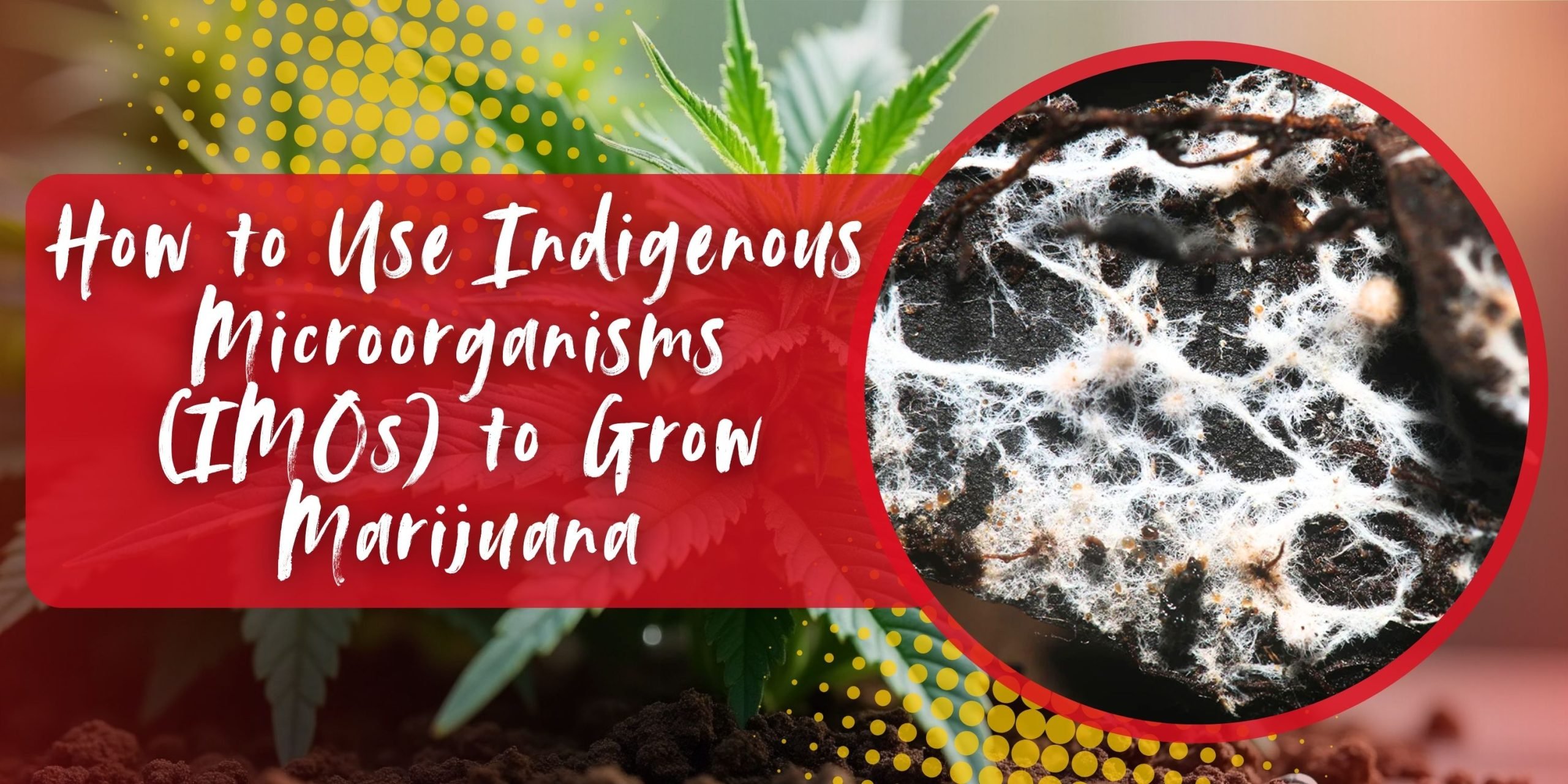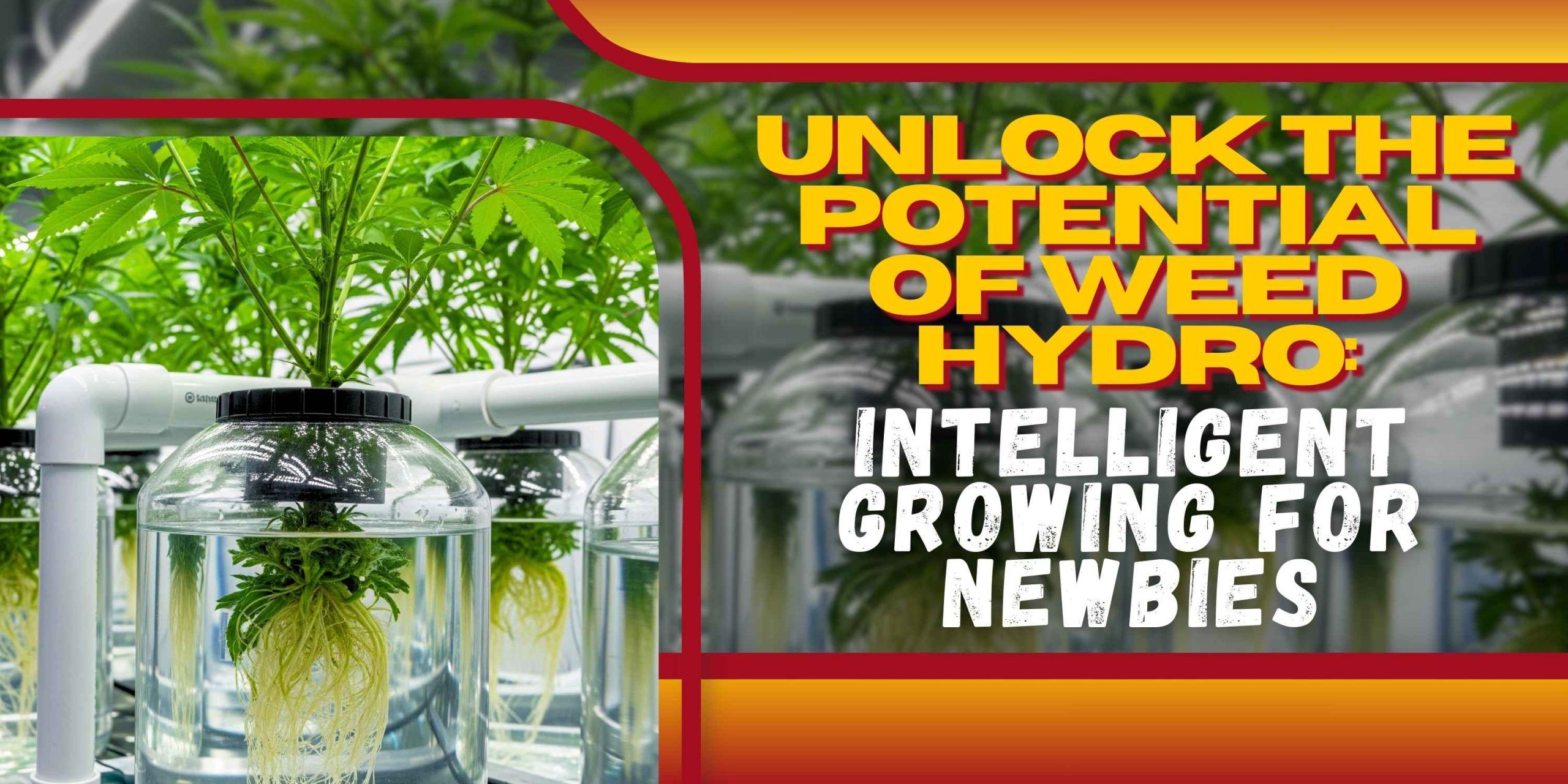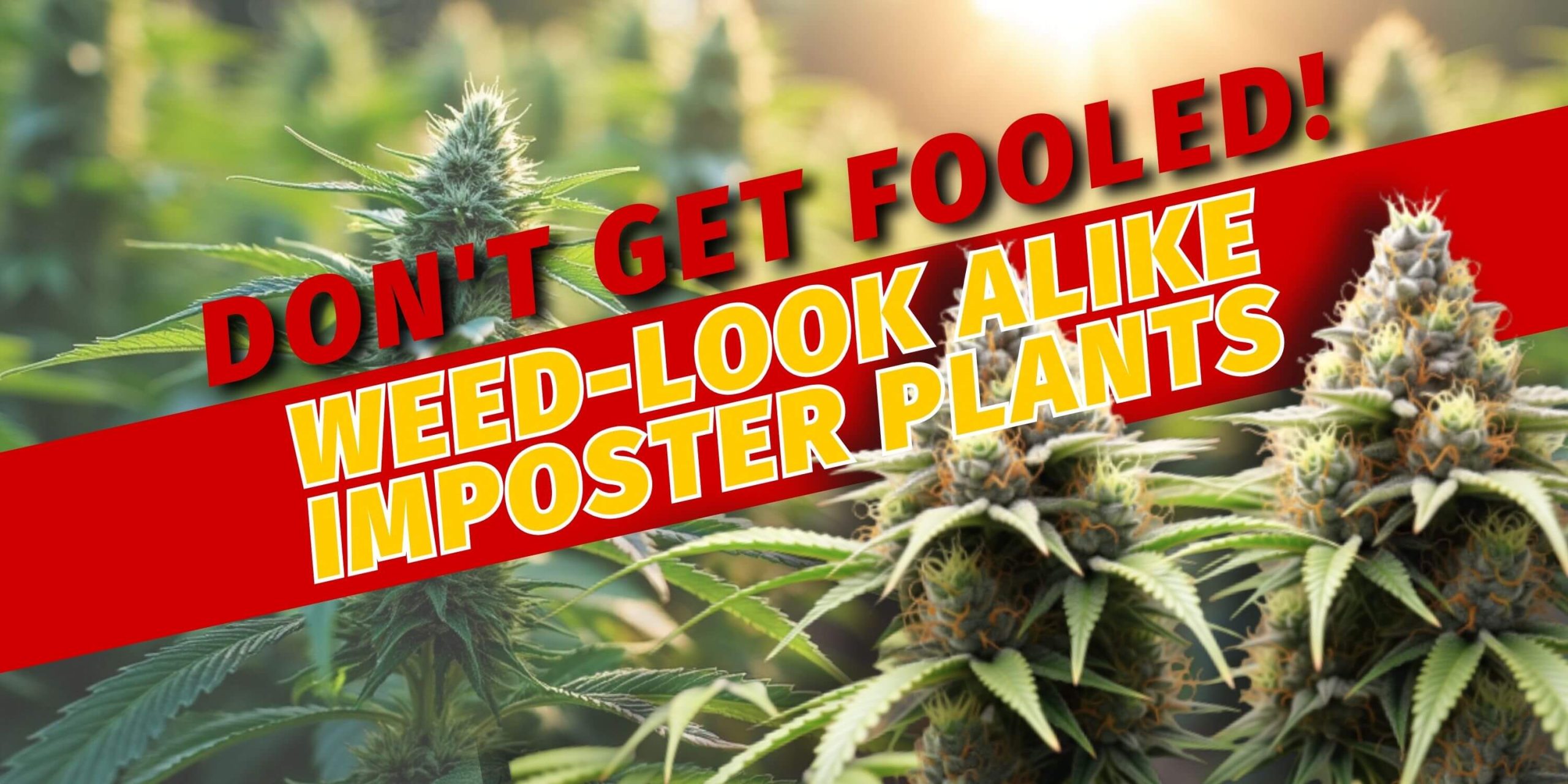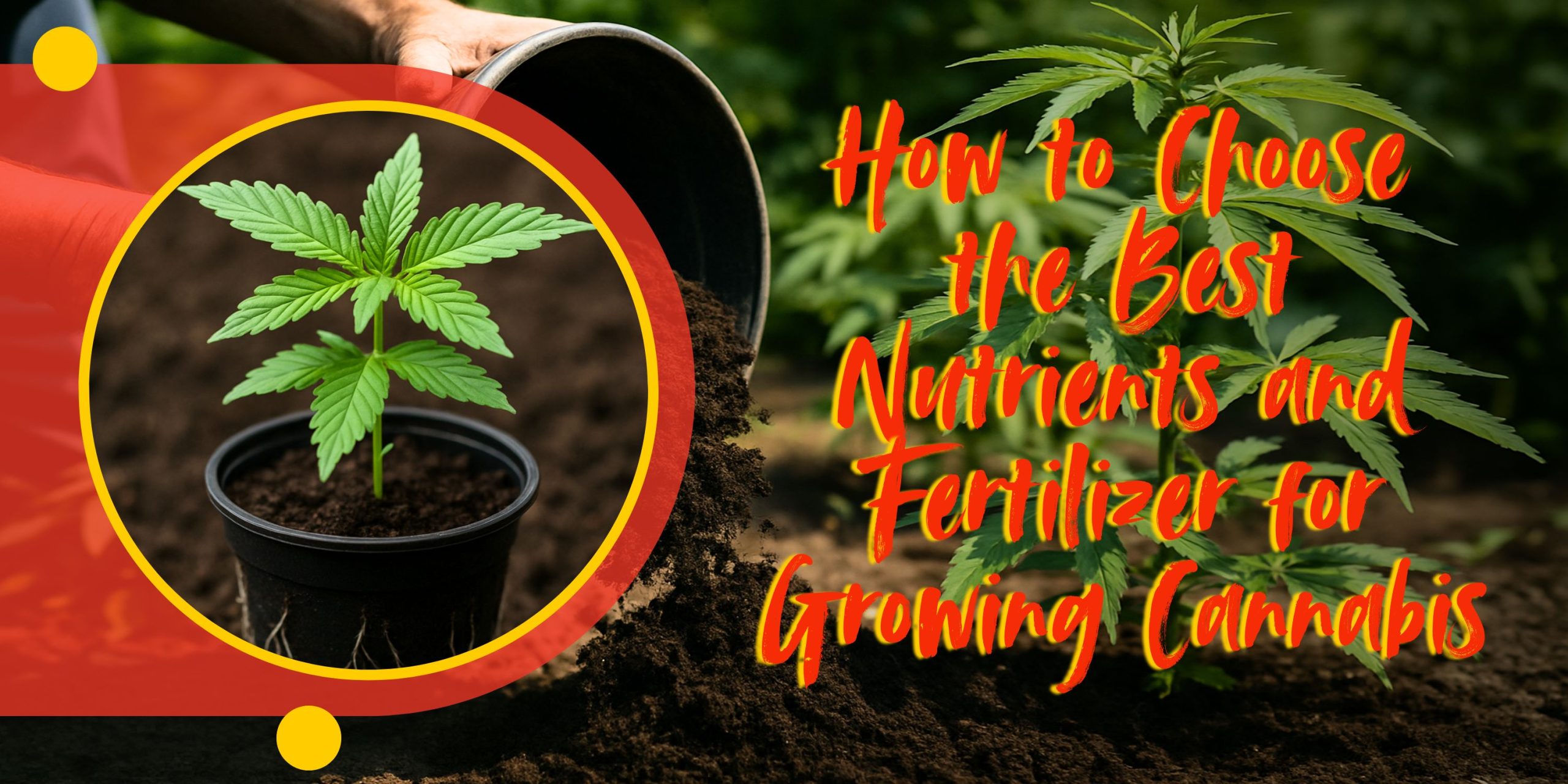Indigenous Microorganisms (IMOs) are the building blocks of healthy soil ecosystems. They are a natural workforce that is in charge of basic biological functions, including breaking down organic debris, fixing nitrogen, and changing the pH of the soil. In cannabis cultivation, IMOs coexist symbiotically with plant roots, facilitating nutrient absorption and hormone production. This relationship and what is imo3 are essential for the growth of healthy and strong plants in organic and regenerative systems that use less or no synthetic inputs.
The microbial community created by IMOs also forms a “soil food web” that is constantly changing, allowing bacteria, fungi, nematodes, and protozoa to interact with one another. These interactions keep the chemistry of the soil stable, increase biodiversity, and protect the soil from unexpected changes in the environment. By growing these natural microbial communities, farmers make a healthier ecosystem that can take care of itself and generate high-quality cannabis year after year.
Using IMOs in Cannabis Culture: The Benefits
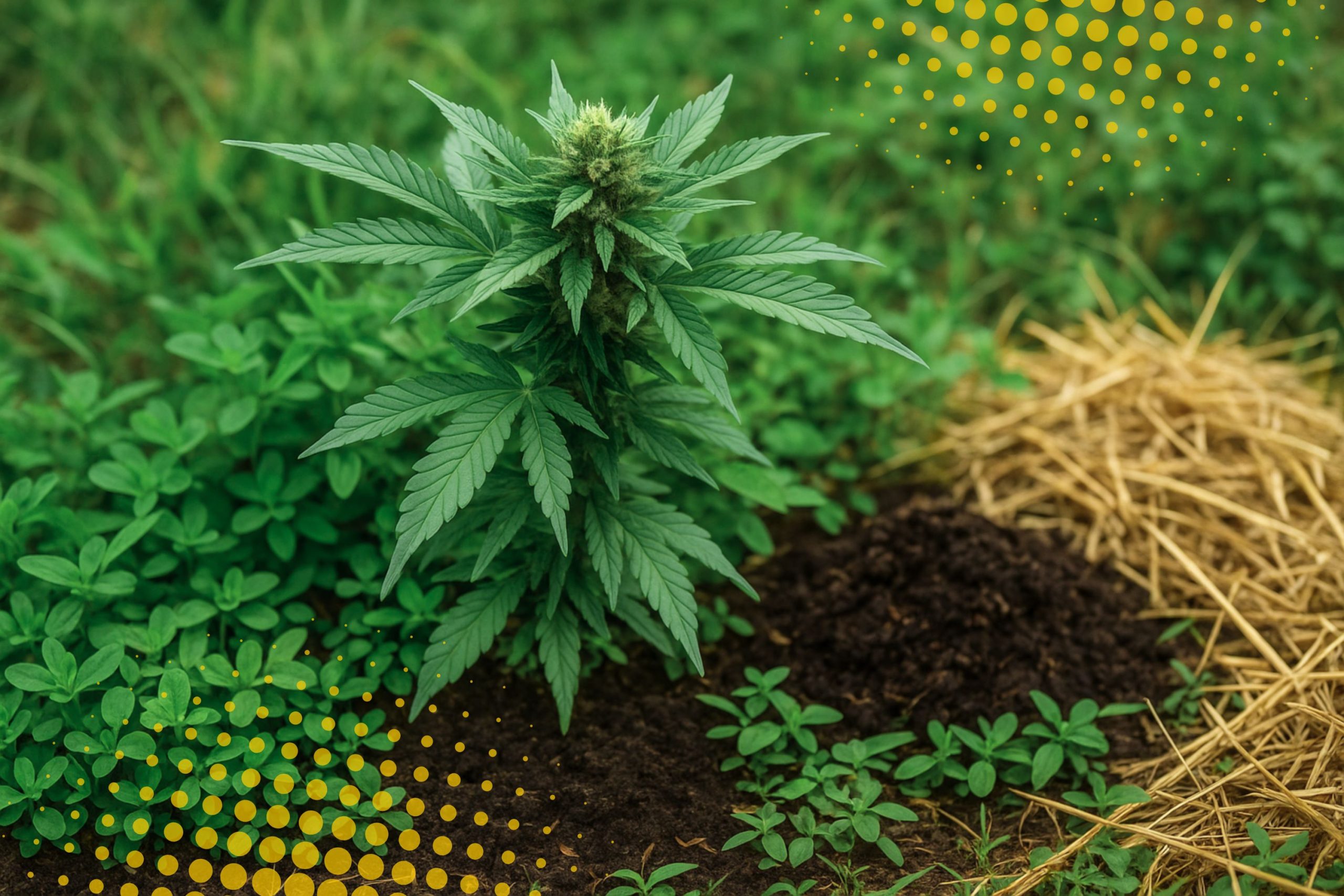
One of the best things about utilizing IMOs to grow cannabis is that they make the soil ecology stronger and more independent. IMOs allow nutrients to cycle and pathogens to become naturally resistant, so you don’t need as many synthetic fertilizers and pesticides. Such an approach not only makes plants healthier, but it also keeps nearby ecosystems safe from chemical buildup and nutrient leaching.
Farmers also noticed that growing in IMO-dominant soils made the plants produce more terpenes and cannabinoids. Microbial activity causes secondary metabolites to develop, which are an important part of the smell, taste, and medicinal effects of cannabis. When used with compost, living mulch, and other regenerative methods, IMOs provide a complete, all-around plan for growing high-quality, long-lasting cannabis.
Step-by-Step IMO: Collection and Cultivation Process
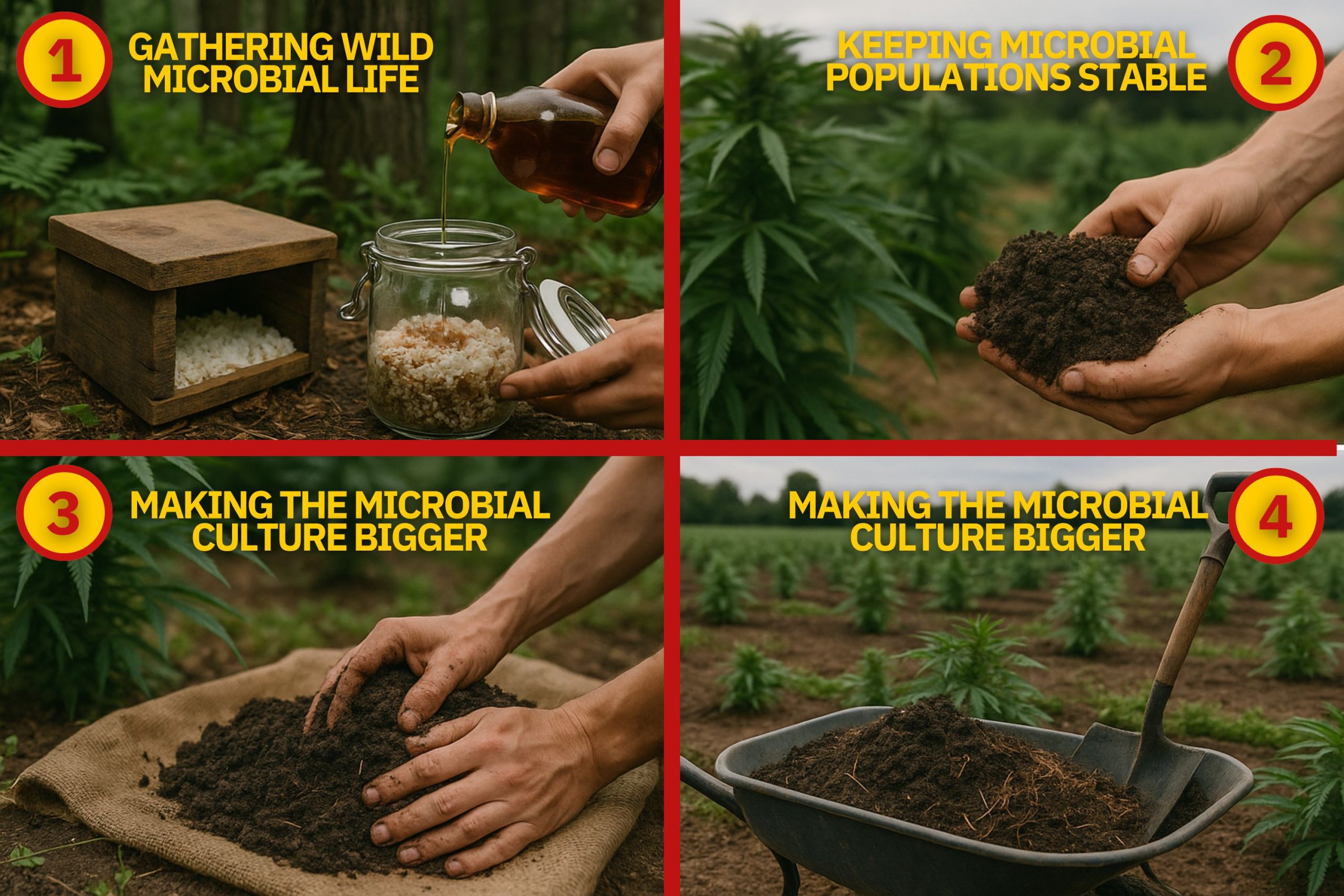
IMO-1: Gathering Wild Microbial Life
The best place to collect is a mature forest or undisturbed woods with a lot of decaying organic debris. These places are full of bacteria, which helps them grow and stay stable. Stay away from places that are polluted with chemicals, cow poop, or foreign monocultures. Put your rice medium in the spot you specified and check it every day for changes. White or yellowish-white mycelium is fine for colonization; however, dark green or black mycelium is hazardous and should be thrown away.
To get the best results, use hardwood containers instead of plastic or metal. This will keep the microbial fermentation process from changing. If there isn’t a forest nearby, a clean compost pile or wild underbrush will work just as well as a collection location. The weather and humidity will determine when colonization happens, so you need to watch closely to make sure that microbial activity is at its highest before decomposition starts.
IMO-2: Keeping Microbial Populations Stable
For microbes to stay alive for a long time, they need to be stabilized. Adding raw brown sugar or molasses not only stops further fermentation, but it also protects the integrity of microbial DNA and enzymes. It’s natural and even better to smell a little fermentation while the food is being stored. This means that the bacteria are going into a dormant condition instead of a dead state. To keep IMO-2 from getting contaminated and to make it last as long as possible, put it in glass or ceramic containers.
Put the date of collection and the place where it came from on the container. This labeling simplifies the process of conducting additional tests later to identify which sources exhibit the highest levels of active microbial activity. Farmers who work with a lot of IMO sites may be able The goal is to increase biodiversity by either rotating batches or merging them from diverse habitats. However, they should be careful not to mix incompatible microbiomes.
IMO-3: Making the Microbial Culture Bigger
During this stage, imo3 is like composting, and oxygen levels are crucial. To keep the mixture from going bad in anaerobic circumstances, turn it every day. There needs to be a steady amount of moisture; if it’s too wet, the bacteria will die, and if it’s too dry, the actions that microbes do will stop. With good compost, there is a sweet, earthy smell and a fluffy texture that shows that living things are growing.
Adding rock dust or biochar here can help the microbial habitat even more. Biochar gives microorganisms a place to live for a long time, while minerals in rock dust give them micronutrients that keep enzymes working. These improvements help bacteria fight off threats and make sure they stay active when put into composting systems or grow media.
IMO-4-Inoculating Native Soil Substrate is crucial
In IMO-4, the microorganisms have fully acclimated to the native soil and can be used directly in farming. At this point, fermentation needs to be watched closely so that it doesn’t get too hot or too low in oxygen. You can use a thermometer to check the temperature of the pile to see how active the microbes are. The best range is 110–125°F (43–52°C). Stirring often helps oxygen get to the inner layers and keeps the microbial bloom going.
You may make this final product even more particular to cannabis by mixing it with other organic amendments like kelp meal, neem cake, or vermicompost. When you use IMO-4 in your grow beds, it works as a microbial inoculant, a humic stabilizer, and a plant development booster all at once.
How Cannabis Growers Use It
Drenching the soil
Soil drenches are probably the best way to get IMOs into container or ground cannabis growing. To keep microorganisms from becoming shocked by the heat, make sure the water is between 65 and 75 degrees Fahrenheit (18 and 24 degrees Celsius). Drenching in the early morning or late evening also keeps microbes alive by keeping UV light from breaking them down.
Weekly treatments every 2–4 weeks help keep the microbial community going, especially during important times such as after transplanting or when the flowers are changing. Mix with kelp extract or molasses to provide a microbial diet that encourages vigorous colonization and root symbiosis.
Top Dressing
Top dressing slowly releases organic substances and living things like bacteria. For even better results, use straw mulch or shredded leaves on top of the topdress layer to keep it from drying up and get earthworms moving. As the layer breaks down, bacteria slowly move into the rhizosphere, where they develop long-term fertility and protect the root zone from changes in pH and disease.
This technique works best in no-till beds, when the soil is disturbed as little as possible. When you keep adding layers of IMO-dense compost, it makes fungi more common, which is good for cannabis plants that grow year-round.
Feeding the leaves (for young plants)
To apply foliar sprays evenly without saturating the leaves, you need to use a fine mist sprayer. Spraying should be done right before the lights come on or soon after sunrise so that the leaves can dry off and mold or mildew can’t grow. Foliar feeding isn’t the main way that microbes colonize plants, but it can be employed to add disease-fighting organisms to the phyllosphere that fight off powdery mildew or spider mite infestations.
Don’t spray during blossoming to keep the buds safe from any microbial residue. Foliar IMO treatments work best during the seedling and vegetative stages.
Making Compost Tea
Keep the location where you are boiling compost tea with IMO open to the air the whole time. To keep the oxygen levels over 6 ppm, use aquarium pumps or commercial compost tea brewers. Using things like alfalfa meal, seaweed, or fish hydrolysate in brewing can help give more variety to microbial communities and get them moving.
You should use it within four hours of creating it to keep microbes from dying off. Use tea as a drench in the soil or as a foliar spray, depending on what the farmer wants. Using it once a week or every other week keeps the soil’s microbial energy at its highest.
Things to Avoid When Using IMOs
One of the most common mistakes is using IMOs without getting the growth environment ready for them beforehand. To enable microbial activity, soil must already have a stable structure, a balanced pH, and enough organic matter. Using IMOs on soil that is sterile, compacted, or chemically contaminated will completely cancel their effects.
Another problem is the failure to gradually acclimate IMOs to greenhouse or indoor settings. Excessive exposure to man-made circumstances could shock microbes dug up outside. Start by processing tiny pilot amounts and watching how the soil reacts before you fully integrate. If you monitor factors such as temperature, humidity, and airflow, IMOs can survive and even thrive.
How to Store and Expand IMOs for Commercial Cannabis Farms
Many commercial farmers use solid-state fermentation systems on rice bran, wheat mill run, or sugarcane bagasse as microbial carriers for large-scale production. These give microbes a place to grow and food to eat for only one-tenth the cost of synthetic inputs. Johnson-Su bioreactors also make it easy to scale up microbial composting with little work and great aerobic stability.
If you store IMO-2 in cold storage and vacuum-seal it, it can stay viable for several months, especially if the temperature is below 50°F (10°C). Liquid IMO fermentation is another option for mass production. In this process, the cultures are fermented in large tanks with regulated aeration and nutrient supplies. This technique makes a consistent and easy-to-use microbial product that may be used for fertigation or spray rigs.


